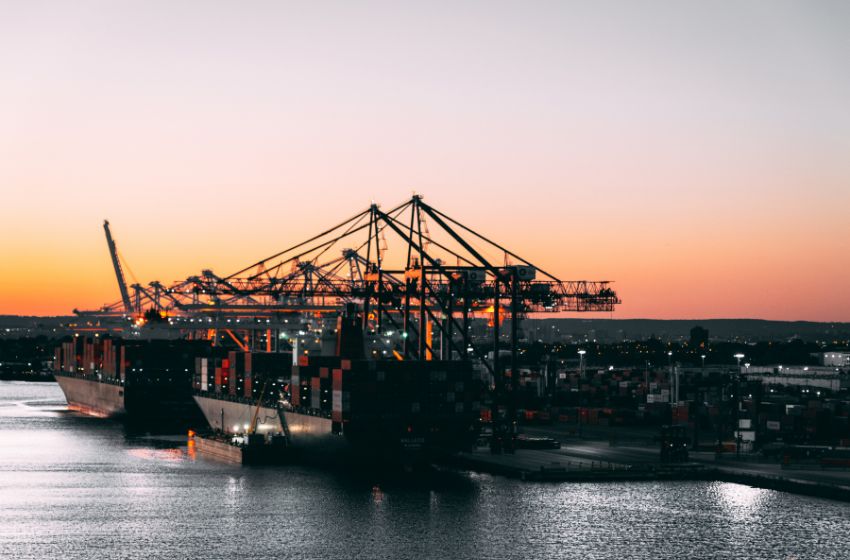Main — Diplomacy — Top 5 pink lakes in Ukraine
DiplomacyTop 5 pink lakes in Ukraine

There are actually many pink lakes in Ukraine, most of which are located in the Kherson region and it's easy to get there from Odessa. The pictures here are really amazing and unique. These most beautiful places in Ukraine attract hundreds of photos of tourists!
Cover photo: "Flying above the Pink planet" by Yevhen Samuchenko (creative nickname Q-lieb-in) Lemurian lake, Hryhorovka, Kherson region, Ukraine
These pink lakes contain both mud and salt that offer different kinds of healing properties. The local salt water in Ukraine is rich in: minerals, acids, salts of magnesium chloride and potassium, magnesium bromide, sodium iodide, etc. The water levels in these lakes are around 35% salt, but the salt levels do change regularly.
The first question that comes to mind when you hear "pink lake" is why is it pink? The pink colour of the reservoirs is created by the unicellular algae Dunaliella saline, which under the action of the sun produce beta carotene (the same as in carrots). This is almost the only living organism that can survive in such a concentrated salt solution. And the hotter the summer, the richer the colour they acquire.
The first time you see the pink salt lakes of the Kherson region in Ukraine it feels as though you are looking at another planet. During the summer months, microscopic algae causes the water to turn pink and red. The view from above is literally out of this world, which is why I chose to use a drone to convey the atmosphere of this unusual place.
Yevhen Samuchenko, the Winner and finalist of many most famous world photo contests
Rest and photo sessions on pink lakes in Ukraine are becoming more and more popular. All places can be reached by public transport and car.
Kinburn Spit

Kinburn Spit is not only a great place to relax in harmony with nature - pine forests, wide steppes and clear sea. It is also a place where you will marvel at the unknown beauty of Kinburn's salt lakes.
Near the village of Heroyske in the Kherson region, salt continues to be extracted using the method of gradual evaporation. Here the sea water flows through twenty lakes, and only then gets to artificial reservoirs, where it turns pink.
This area does not look like an industrial zone: there are quiet lakes, colourful seashells on the sandy bottom, red poppies in green. Pelicans, cormorants and seagulls fly. In August, the landscape is usually added to the huge white "pyramids" of extracted salt, which lie just on the ground.
Solonets-Tuzla

Lake Solonets-Tuzly is located in the Nikolaev region near the village of Rybakovka. Since ancient times, salt has also been mined here in an open way. There is white salt on the surface of the lake, pink salt under it. In addition,to the positive physiological effects on the human body, this place deserves attention with its history.
Travelling to Ukraine, the famous writer Maksym Gorky visited and worked on the salt fields of this lake. The story of this action later became the basis of his autobiographical story "On Salt".
Lake Lemuria

The most popular pink lake in Ukraine is Lemurian, which is located in the village of Grygorivka in the Kherson region, in one of the bays of Syvash Bay. It is often called the Ukrainian "Dead Sea" because its salinity is 35%. The lake has healing characteristics and huge mineral content.
The history of this lake began on August 26, 1969, when a Soviet bomber fell on the shores of lake Sivash. During the work, rescuers created an abyss and touched the aquifers. Later, the funnel was filled with water that was saltier than the one in Syvash. Locals named the lake "Yama", but later it was named after the mythical continent of Lemuria.
Now, the lake has minimal infrastructure - parking, shower and toilet. The best period for visiting the Lemurian lakes is summer, because at this time the water is actively evaporating, as a result of which the colour becomes richer. Until recently, this lake was not popular with the tourists, but every year it became more and more attractive. Someone just wants to do a unique photoshoot on the shores of the pink lake, and someone comes here to get well.
Lake Genichesk

Genichesk Pink Lake is an internal drainage salt lake of estuary origin. It is located in the North of the Arabat Spit east of the Sivash Bay and is separated from the latter by the peninsulas of Genichesk Kut - in the North, and Semenovskiy Kut - in the west. The dimensions of the reservoir are almost 5 km in length and up to 3 km in width, the total area of the water surface is more than 9 square kilometers. It is the largest in the Genichesk region and the Genicheskaya group of lakes.
Until the beginning of the XXI century, it was the raw material base of the salt industry in Priozernoye now - one of the most popular locations for photo shoots on Arabatka Spit.
It is"fed" by the waters of the Syvash, which enter the lake through a narrow strait, as well as from underground artesian wells and bottom springs. The level of Lake Genichesk is 1.5 meters below the level of the Syvash, the basin of the reservoir is the former part of the Syvash Bay.
The salt lakes on the Arabat Spit have been a source of table salt for centuries for the peoples who inhabited these lands. The rapid development of industrial salt production began in the region from the first half of the 19th century.
Lake Syvash

Lake Syvash is a unique and one of a kind natural phenomenon in Europe. There are only three analogues of Lake Sivash in the world: the Kara-Bogaz-Gol bays, the Great Salt Lake in the USA and the Dead Sea in the Middle East.
Syvash is a huge gulf of the Azov Sea. This is a shallow reservoir with many peninsulas, capes, bays, islands, which turn it into a complex labyrinth of bays and straits of amazing outlines. Due to isolation, shallow water and good heating, sea water entering through the Tonky (thin) Strait of the Sea of Azov turns into brine, and as a result of intense evaporation, salt crystallizes.
Salt, mineral mud, endemic vegetation, rare animals are just a part of the wealth of these unique places. Isolation, and the relative scarcity of people create conditions for scientific and educational research in this rare corner of nature. The water in Syvash is very saturated with salt and keeps the body on the surface, and the average depth is 1 m.



















